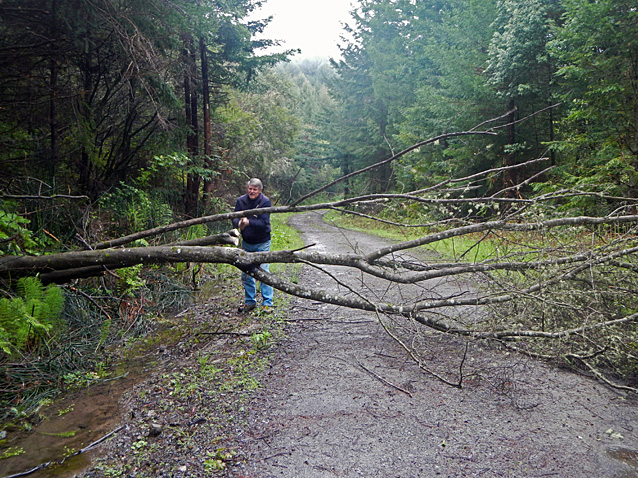 |
| The biggest blue blossum (Ceanothus thyrsiflora) I've ever seen (uprooted by the storm) |
The weather forecast was for sunshine on Thursday, so I drove to Arcata on Wednesday.
It drizzled on and off the next day.
Spring storms had uprooted a few trees, but spared the video camera in the fir tree.
When I reached it I saw worrisome droplets of water inside the Fresnel lens over PIR sensor, but my paranoid fears were for naught, the camera was still perched on the limb.
After unscrewing the lag bolt I took a close look at the tree vole nest, and realized something had destroyed it.
After unscrewing the lag bolt I took a close look at the tree vole nest, and realized something had destroyed it.
The nest cavity had apparently been only an inch or two under the surface of the fir needles, but it was no longer a solid mass. The core of the nest had been torn apart.
We retreated to the truck, uploaded 12 video clips to my laptop, and found only 2 contained footage of the vole.
The other clips contained other arboreal visitors.
What follows is not exactly action-packed, and the jury is still out as to the identity of the nest wrecker.
But if you want to see the voles and the suspects, have a look.
The other clips contained other arboreal visitors.
What follows is not exactly action-packed, and the jury is still out as to the identity of the nest wrecker.
But if you want to see the voles and the suspects, have a look.





